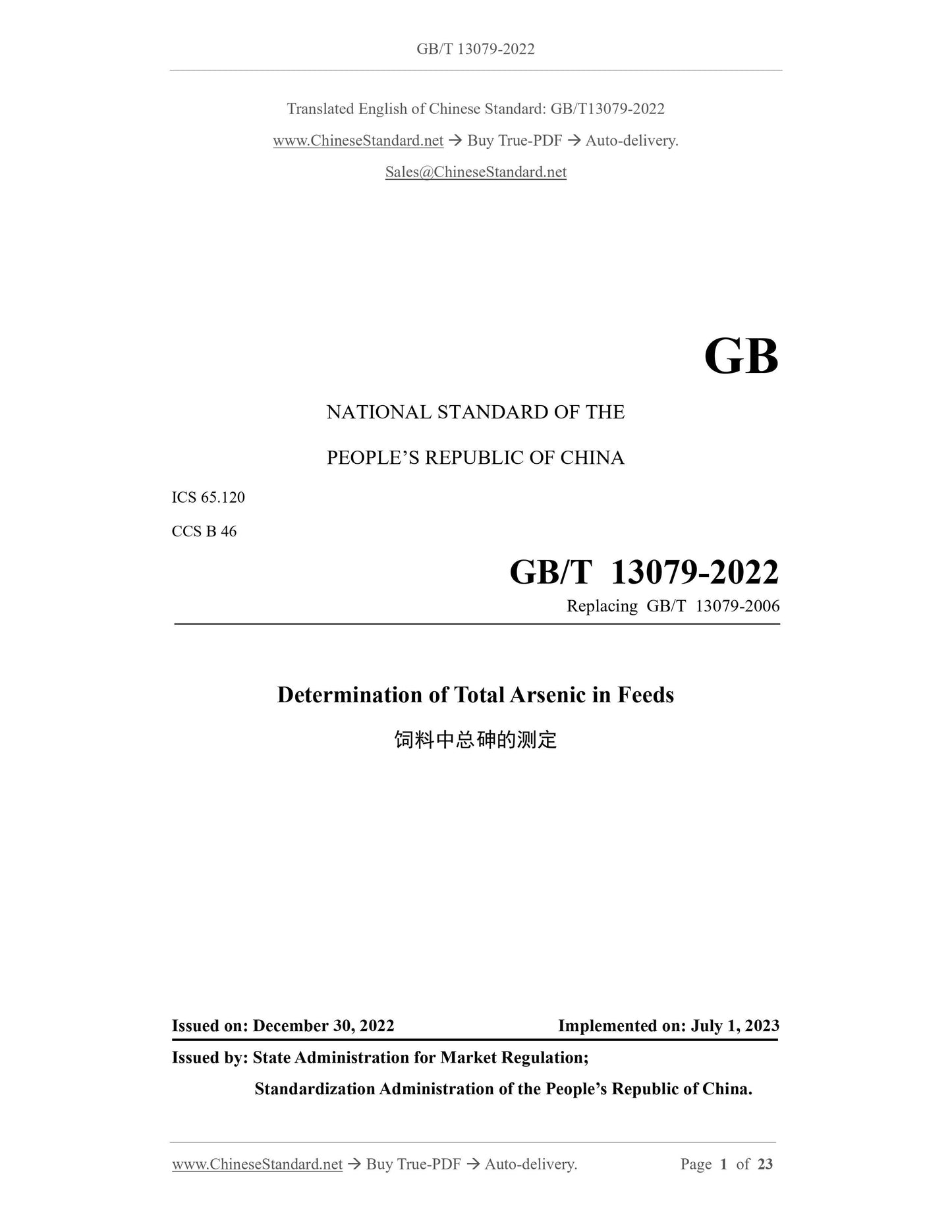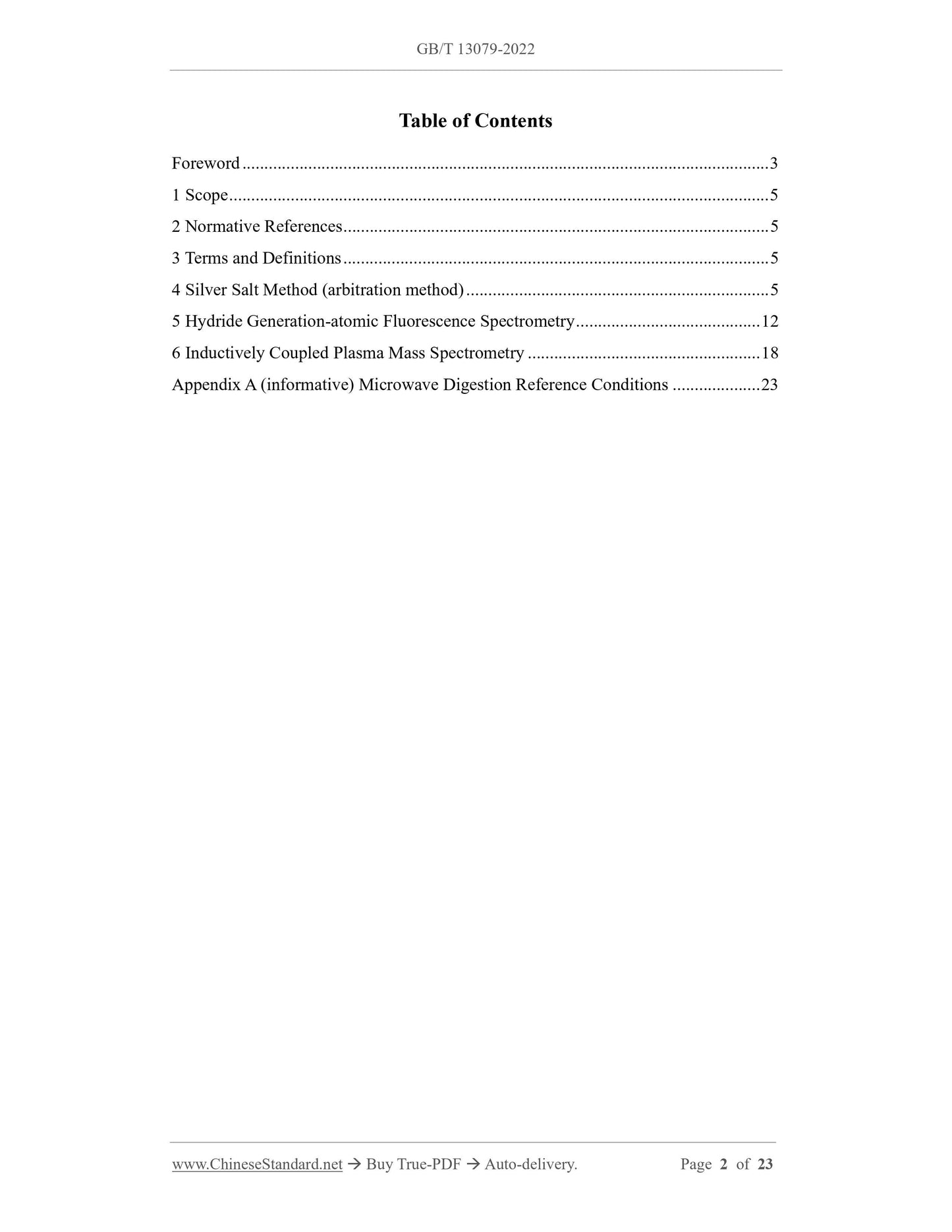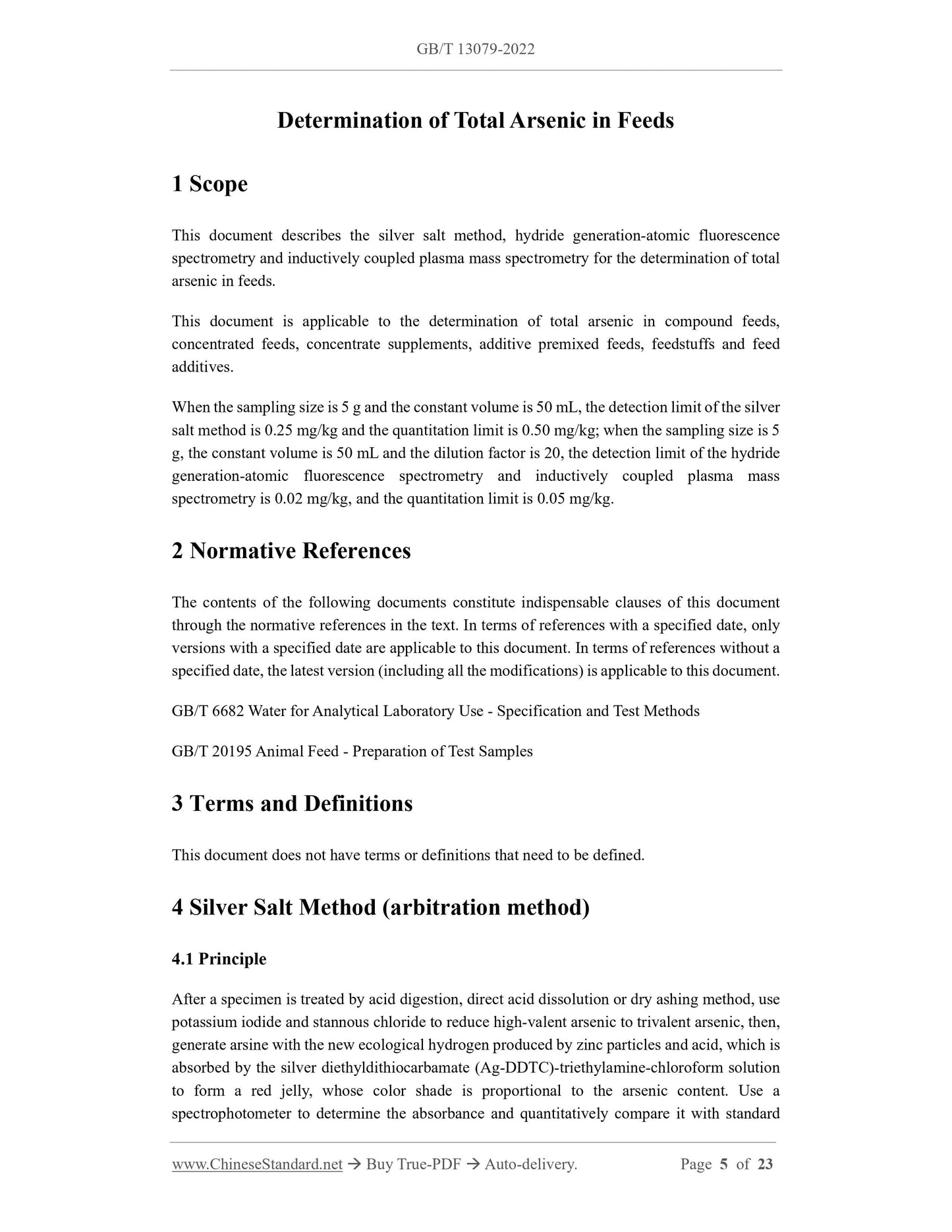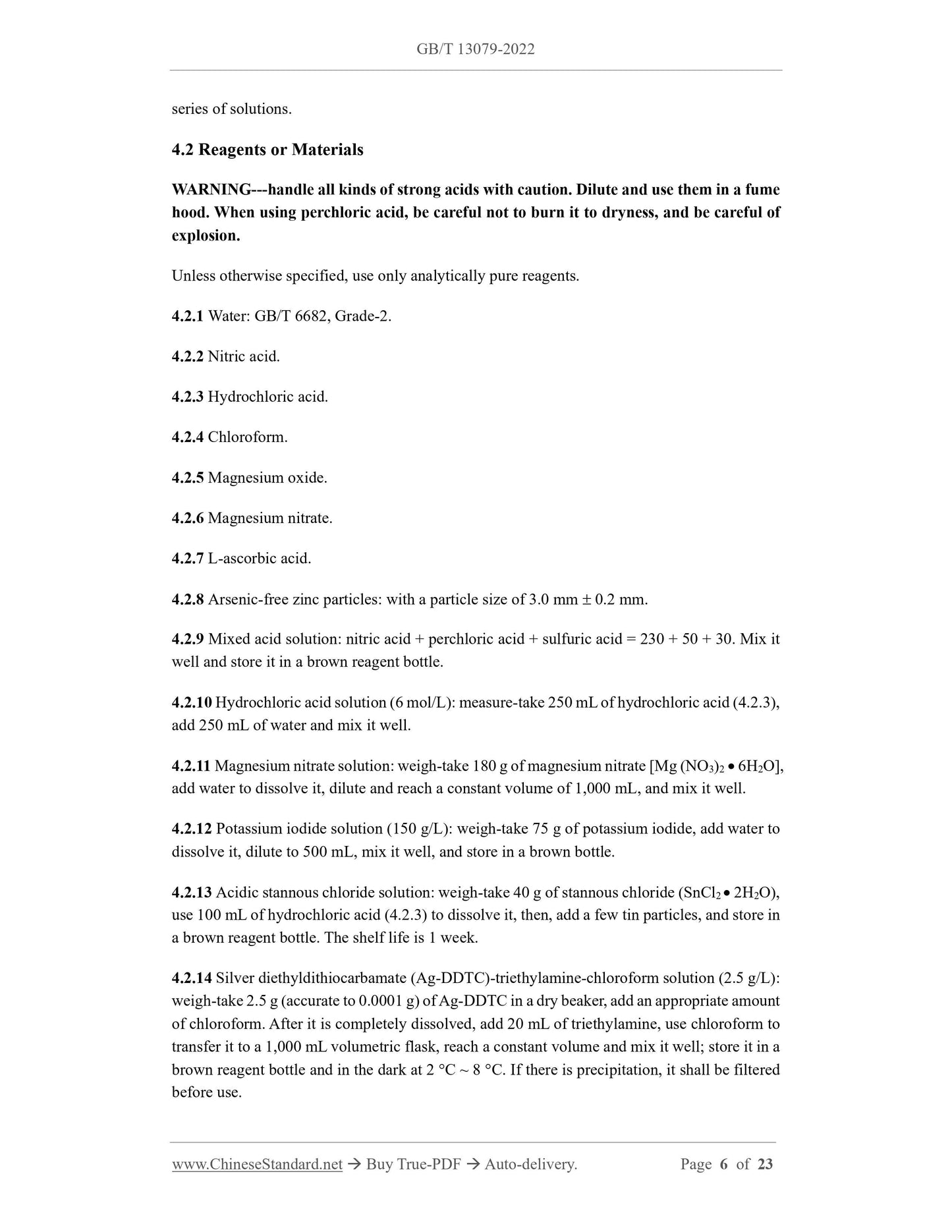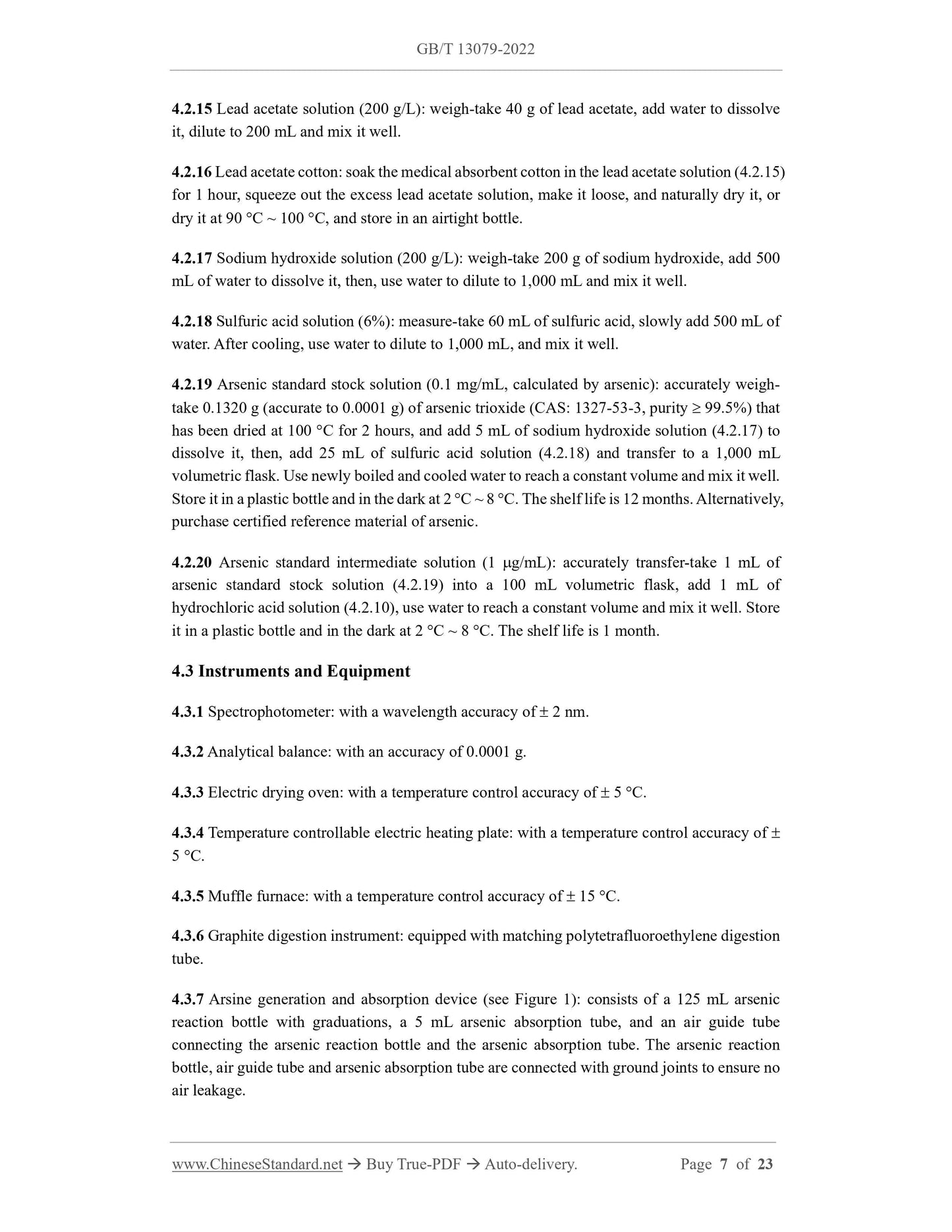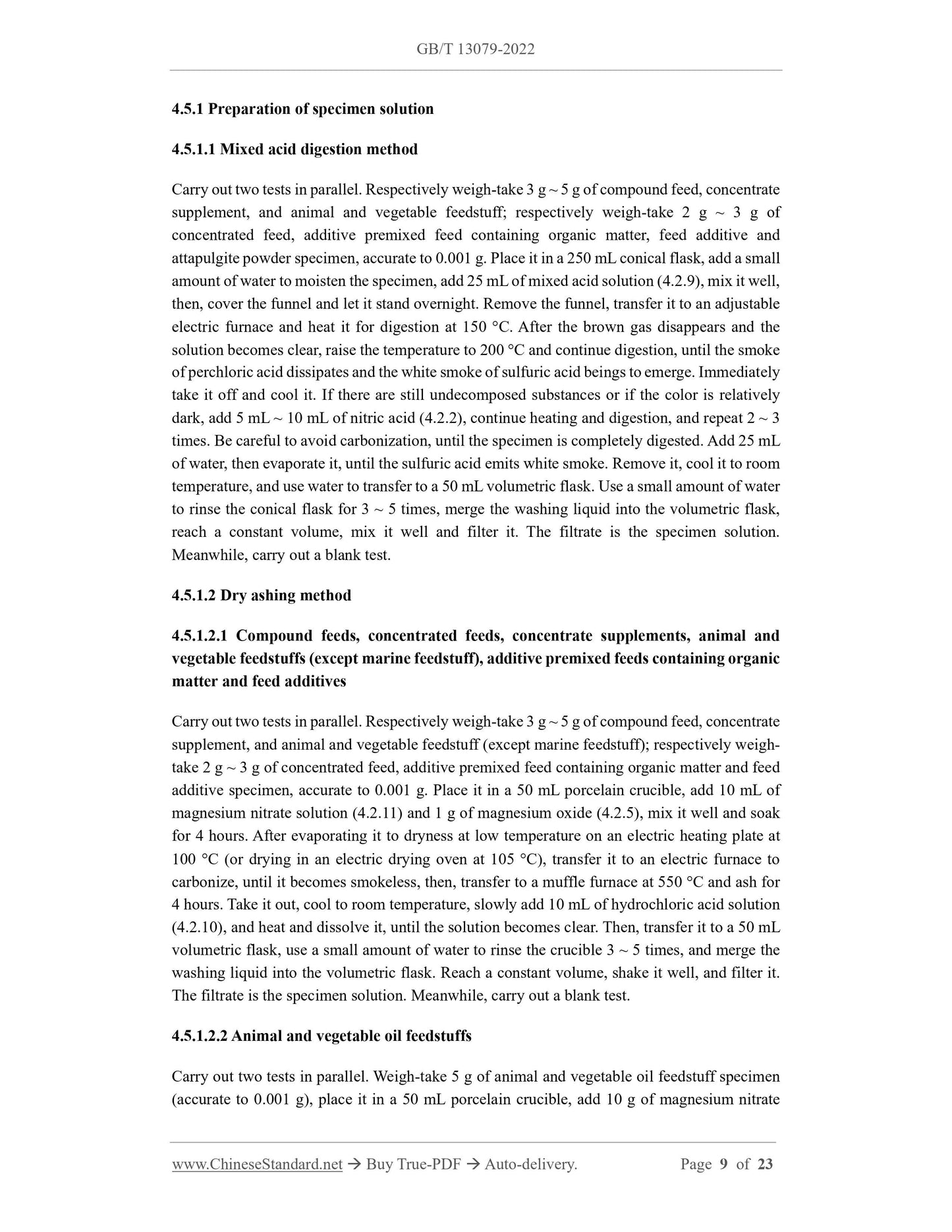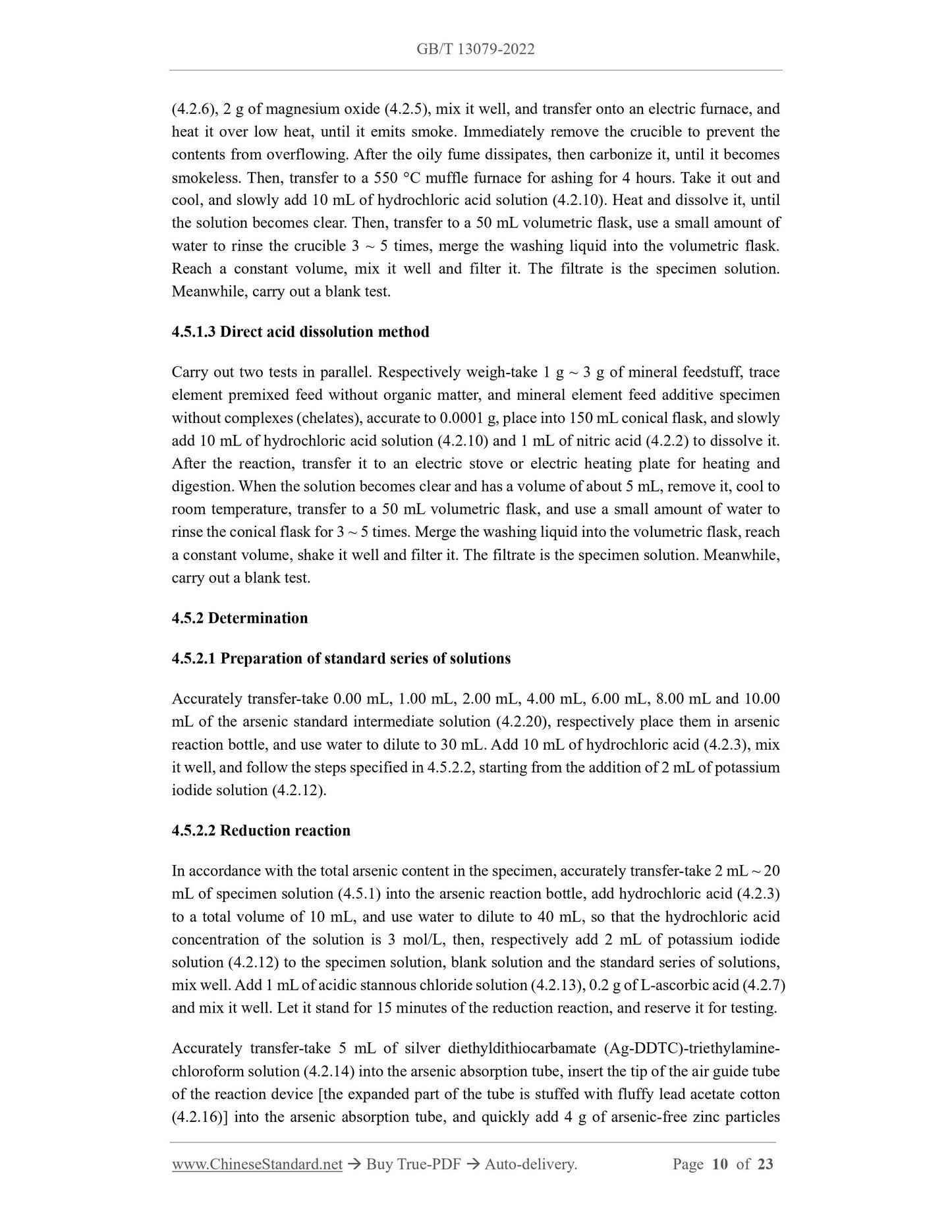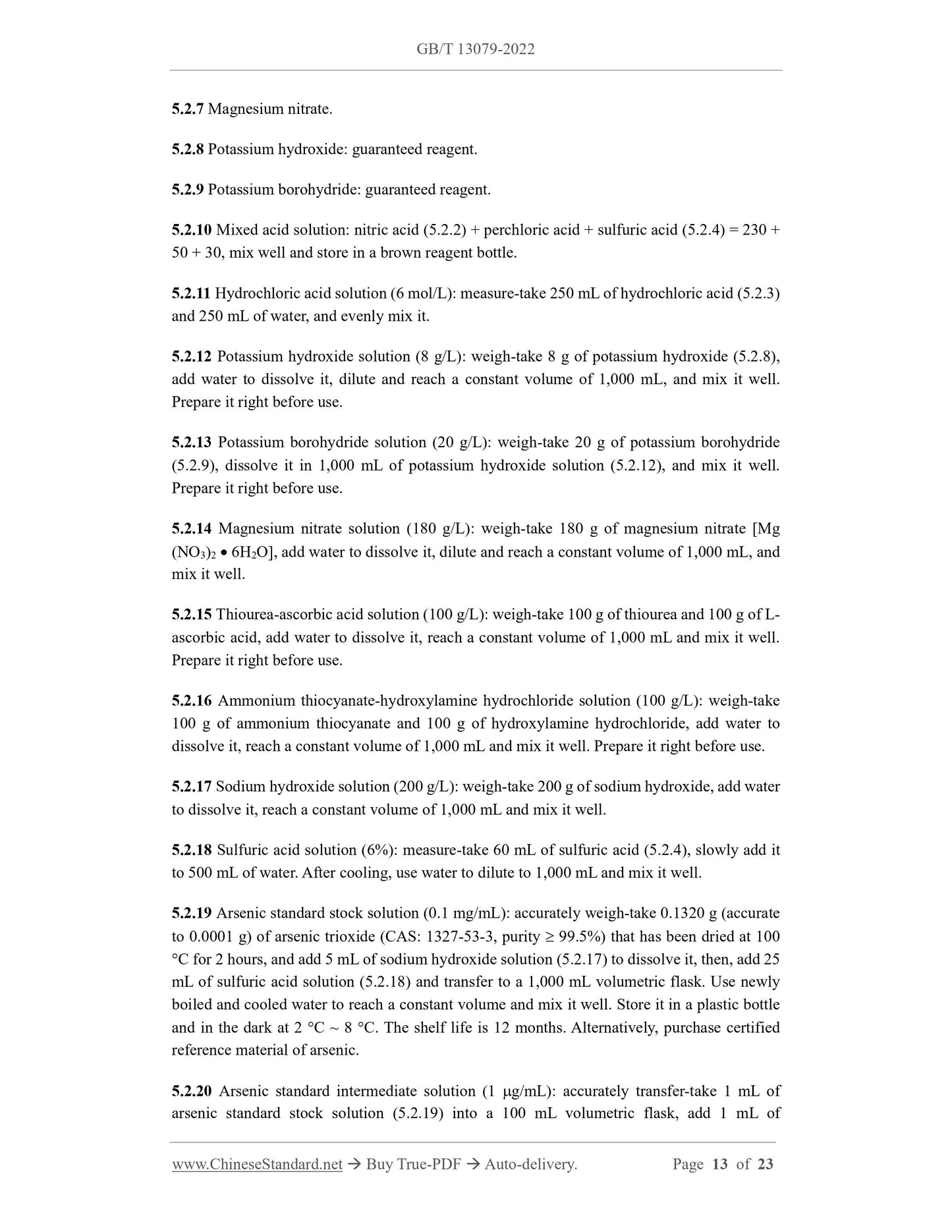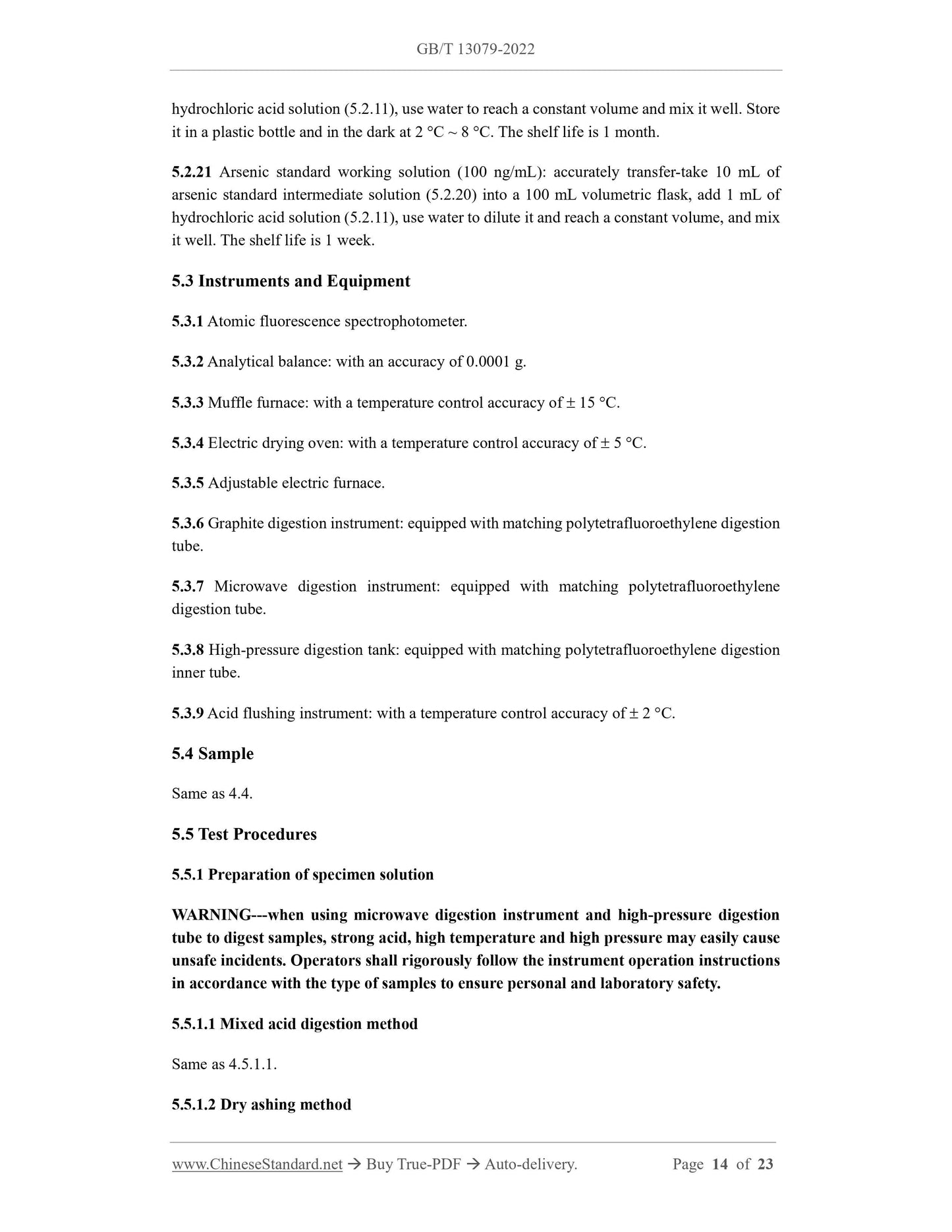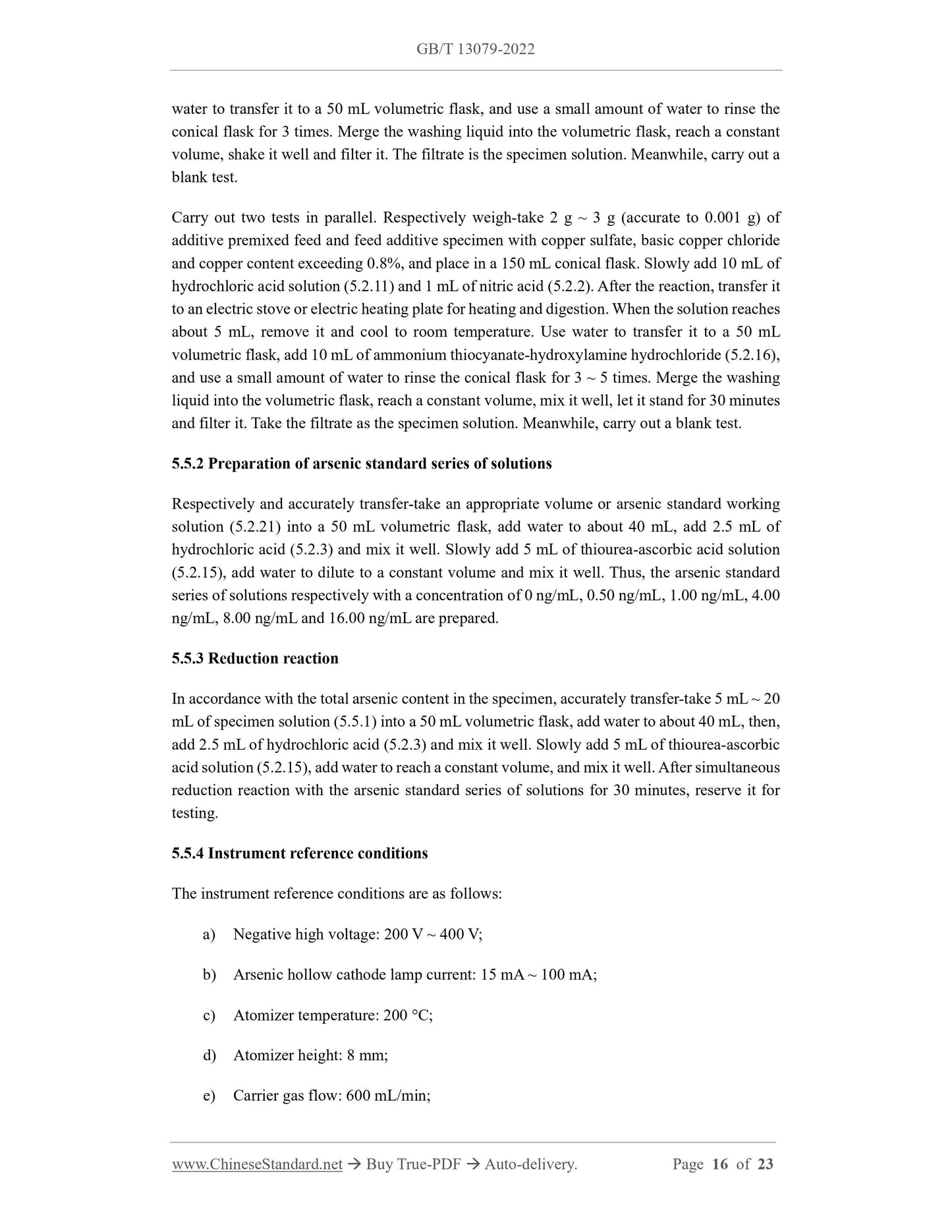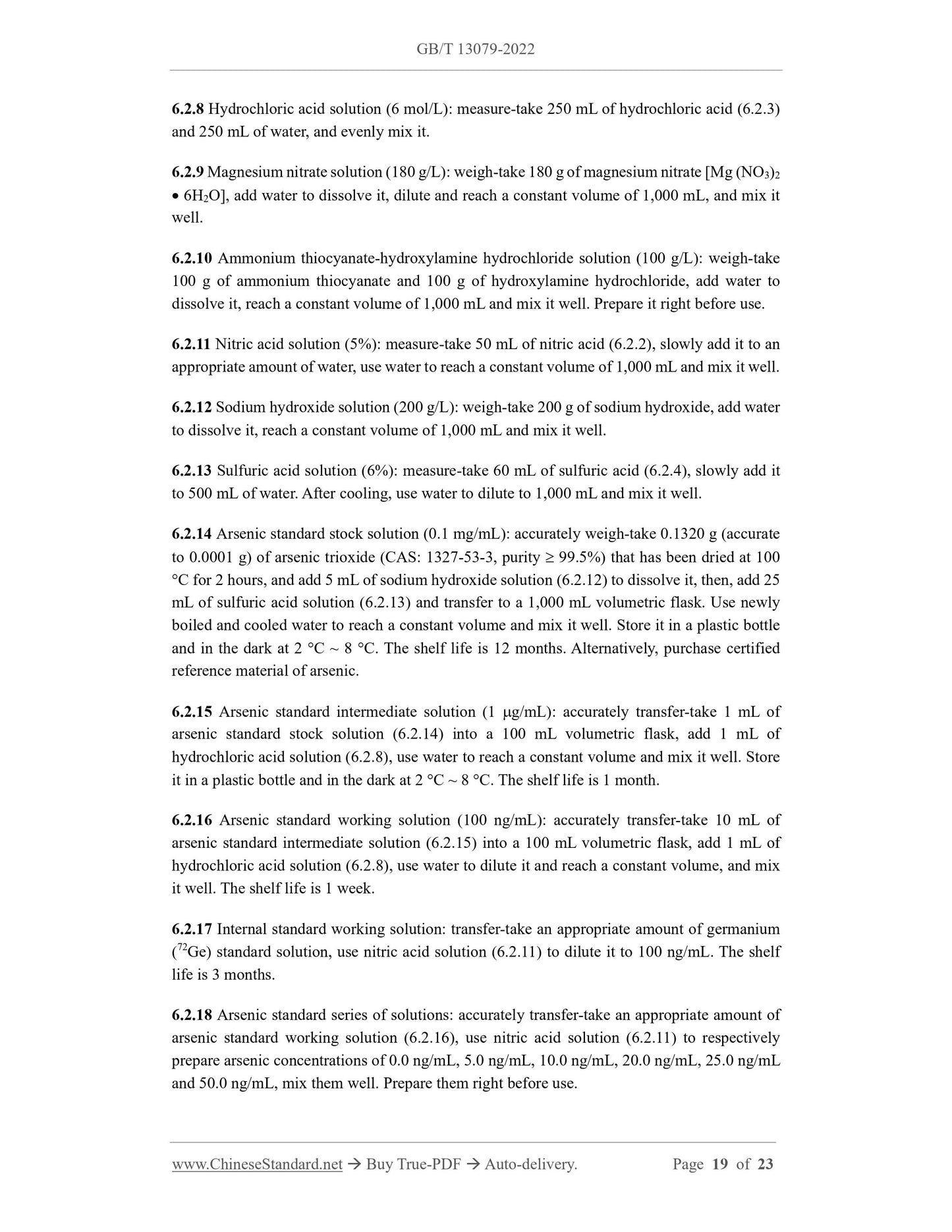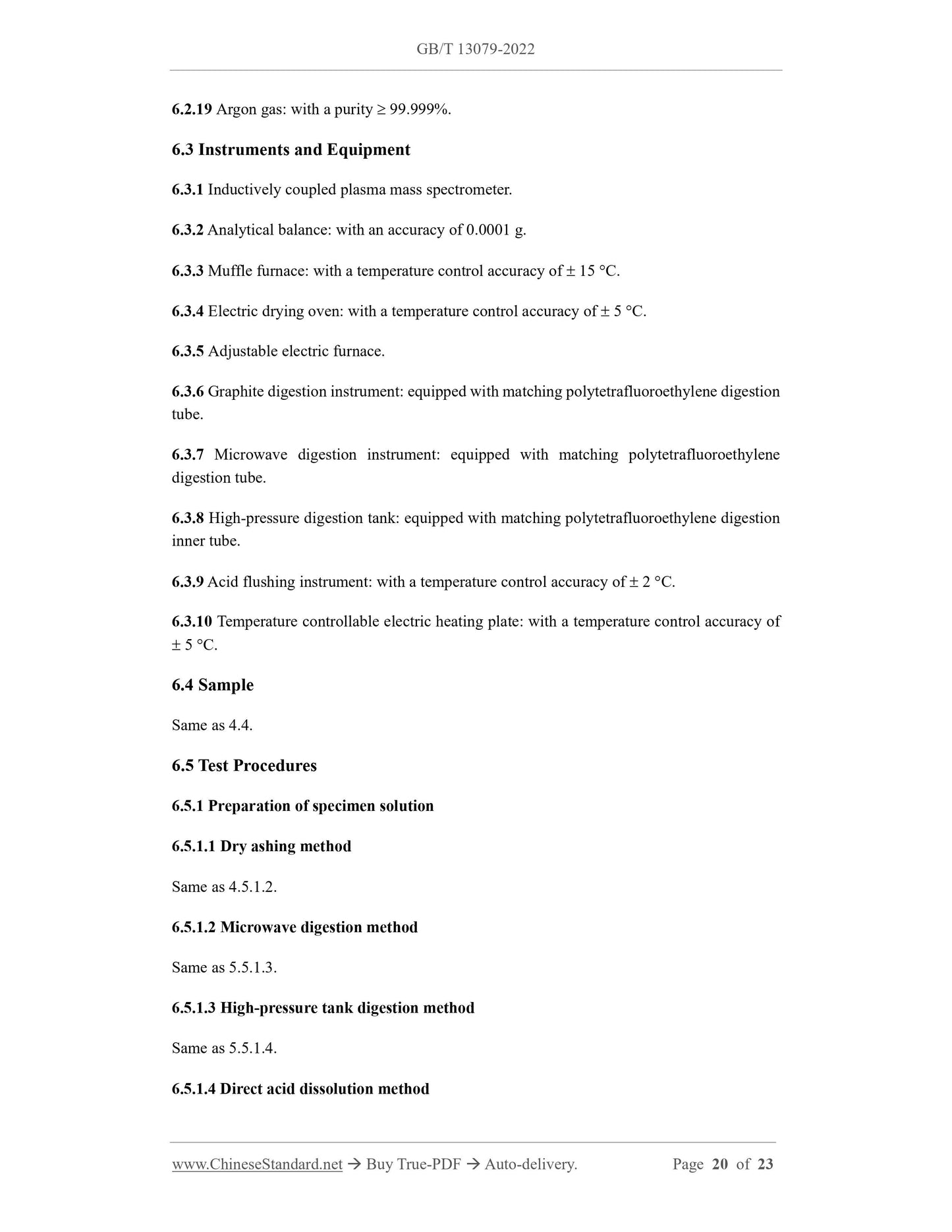1
/
of
12
www.ChineseStandard.us -- Field Test Asia Pte. Ltd.
GB/T 13079-2022 English PDF (GB/T13079-2022)
GB/T 13079-2022 English PDF (GB/T13079-2022)
Regular price
$215.00
Regular price
Sale price
$215.00
Unit price
/
per
Shipping calculated at checkout.
Couldn't load pickup availability
GB/T 13079-2022: Determination of total arsenic in feeds
Delivery: 9 seconds. Download (and Email) true-PDF + Invoice.Get Quotation: Click GB/T 13079-2022 (Self-service in 1-minute)
Newer / historical versions: GB/T 13079-2022
Preview True-PDF
Scope
This document describes the silver salt method, hydride generation-atomic fluorescencespectrometry and inductively coupled plasma mass spectrometry for the determination of total
arsenic in feeds.
This document is applicable to the determination of total arsenic in compound feeds,
concentrated feeds, concentrate supplements, additive premixed feeds, feedstuffs and feed
additives.
When the sampling size is 5 g and the constant volume is 50 mL, the detection limit of the silver
salt method is 0.25 mg/kg and the quantitation limit is 0.50 mg/kg; when the sampling size is 5
g, the constant volume is 50 mL and the dilution factor is 20, the detection limit of the hydride
generation-atomic fluorescence spectrometry and inductively coupled plasma mass
spectrometry is 0.02 mg/kg, and the quantitation limit is 0.05 mg/kg.
Basic Data
| Standard ID | GB/T 13079-2022 (GB/T13079-2022) |
| Description (Translated English) | Determination of total arsenic in feeds |
| Sector / Industry | National Standard (Recommended) |
| Classification of Chinese Standard | B46 |
| Classification of International Standard | 65.120 |
| Word Count Estimation | 18,127 |
| Date of Issue | 2022-12-30 |
| Date of Implementation | 2023-07-01 |
| Older Standard (superseded by this standard) | GB/T 13079-2006 |
| Issuing agency(ies) | State Administration for Market Regulation, China National Standardization Administration |
Share
